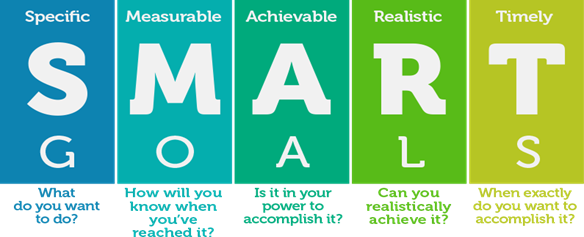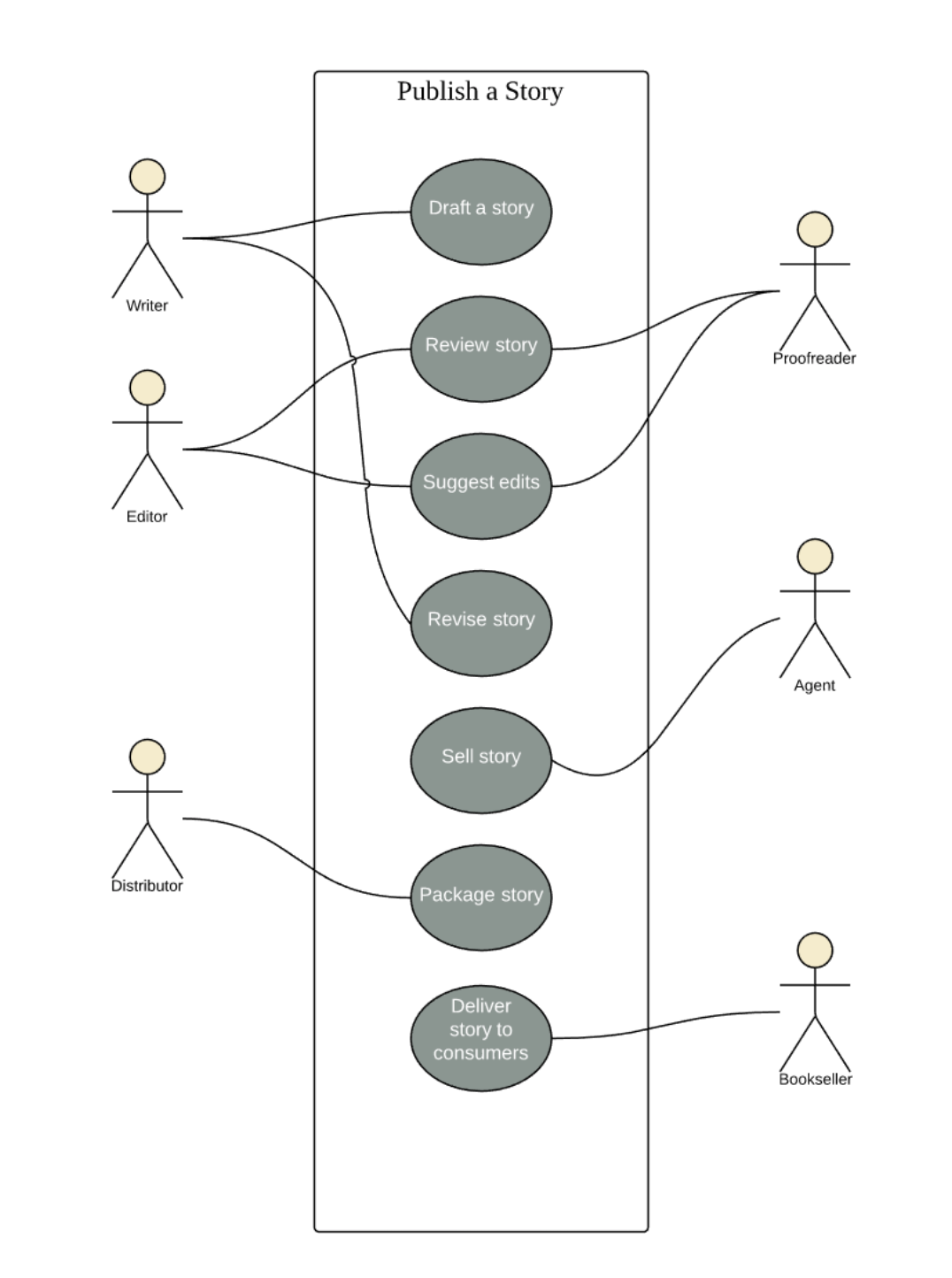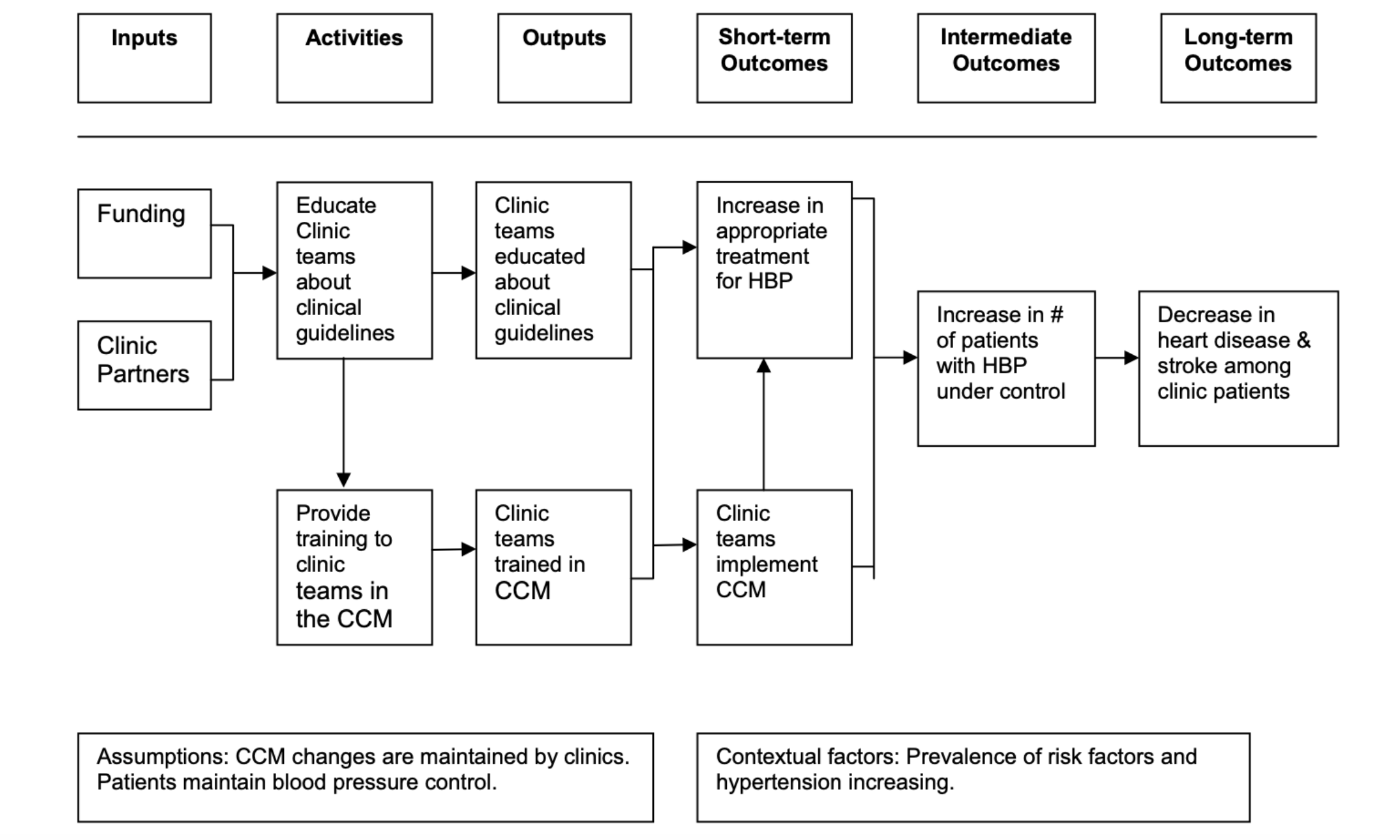DATA PLAYBOOK California Health and Human Services Agency
Planning Part A: Determining Goals and Strategy - Testing Updates
Table of Contents:
1. Identify Questions and Goals
2. Develop a Strategic Plan
2a. The Use Case Diagram
2b. The Logic Model
Step 1: Identify your Guiding Questions and Set your Goals
It is important to decide your vision and purpose behind your project, and identify what you hope your data project will accomplish. Be thoughtful — what impact do you hope to have? What changes are you trying to bring about? It is worth taking the time to write down your answers to the broader Guiding Questions, as they will be the foundation of your goals and strategic plan.
First, a bit about goals: for your project to execute smoothly, it is best to choose SMART Goals, of goals that are specific, measurable, achievable, realistic, and timely. Look at our summary of the SMART Goal checklist below:

| Hint: Goals often fall into one of the following categories: |
|---|
| - Increase something (e.g. increase healthy behaviors in a population) |
| - Make something (e.g. produce a mapping/visualization of all COVID-19 cases across California) |
| - Improve something (e.g. improve living conditions of a population) |
| - Reduce something (e.g. reduce number of smokers in California) |
Step 2: Develop a Strategic Plan
Now that you have identified your goals, you must develop a strategy for achieving your desired outcomes. A Strategic Plan is first and foremost a Roadmap to Success – the more care and thought you put into your plan, the more likely you are to produce a successful data project.
| Did you know? |
|---|
| CHHS has its own Strategic Plan that summarizes our vision and goals for every department’s products and services. While not a substitute for your strategic plan, it can give you ideas and and helps you ensure your strategy aligns with CHHS’ guiding principles and mission statement. |
Utilize a strategic planning framework such as the use case diagram or a logic model. These frameworks will help you explicitly define each step necessary to achieve your goals as well as anticipate what challenges you may face throughout your project.
Strategy Tip: Find the action words that best describe the work you’ll do:
Action words are verbs that describe how you will approach each task in this project. They don’t describe your intended outcome (i.e. increase and reduce are not action words); rather, they describe roles you will take throughout your project to assure a successful outcome.
If you are creating a product:
- Update, Upgrade, Develop, Create, Implement, Evaluate, Produce If you are managing a project:
- Oversee, coordinate, supervise, manage, plan, support, transition If you are implementing the specifics of a project:
- Write, process, provide, maintain, reconcile, direct, administer
 Example Use Case Diagram (lucidchart.com)
Example Use Case Diagram (lucidchart.com)
The Use Case Diagram
This framework is most helpful for projects where you intend to build some sort of system (e.g. website, smart phone app, etc.) that your users must interact with. You also must use a Business Use Case for any data you request using the Data Sharing Agreement form.
A Use Case Diagram will…
- Identify the goals of system-user interactions
- Define and organize functional requirements in your system
- Specify the context and requirements of a system
- Model the basic flow of events in a use case
Instructions for building a Use Case Diagram:
| Step 1: Start by defining your actors, or the users that interact with your system. they can be anything from a person to an organization or outside system that interacts with your product. Note: Think broadly – your users may include institutions both within and outside of CHHS as well as specific populations of the public |
| Step 2: For each user, list all the ways they can interact with your system (these are the “use cases”) Note: Ensure you consider alternate/undesirable courses of events and use cases that aren’t obvious |
| Step 3: Draw lines between use cases to reflect commonalities or relationships among them. Note: Identify the use case with the greatest number of relationships/associations – the most common use cases represent the functions in your project that should be essential. |
Also check out this Online resource to build your own Use Case Diagram.
The Logic Model
The logic model framework focuses on visualizing the relationship between inputs, outcomes, and costs associated with your project. It is a graphical model where each component (or “phase”) of your project relates to a list of intended effects in an implicit, ‘if-then’ way.

| The seven “components” you’ll consider are: |
|---|
| 1. Inputs: The resources you need for your project |
| 2. Activities: What the staff or the program does with those resources |
| 3. Outputs: Tangible products, capacities, or deliverables that result from the activities |
| 4. Outcomes: Changes that occur in other people or conditions because of the activities and outputs |
| 5. Impacts: The most distal/long-term outcomes |
| 6. Assumptions: Your beliefs about the program and the resources involved (including how successful you you think it will be or the challenges you may face) |
| 7. Moderators: Contextual factors that are out of control of the program but may help or hinder your efforts. These may influence participation, implementation, achievement of your outcomes. |
Example: e.g. If I hire more staff for my project (input), then I can collect more data about who would benefit from my service (activity). If we have more data, then our predictive model will be more accurate (output). If our model is more accurate, then we can increase outreach to populations who are more likely to benefit from our service (outcome) and so on.
To begin, simply create six headers as is shown in the diagram above — this can be done by hand, with sticky notes, or online.
Guiding Questions:
- Identifying Impact: What measurable change are you seeking to achieve in the long-term?
- Identifying Outcomes: What measurable changes are you seeking to achieve in the short-term?
- Identifying Outputs: What tangible outcomes can you measure immediately following the implementation of your product/project?
- Identifying Activities: What are some high-level steps you must take to complete your project?
List everything that comes to mind when you answer the those guiding questions above, drawing a box around each entry. Finally, draw arrows between boxes to signify the ‘if-then’ relationship.
 A Sample Logic Model from CDC.gov
A Sample Logic Model from CDC.gov